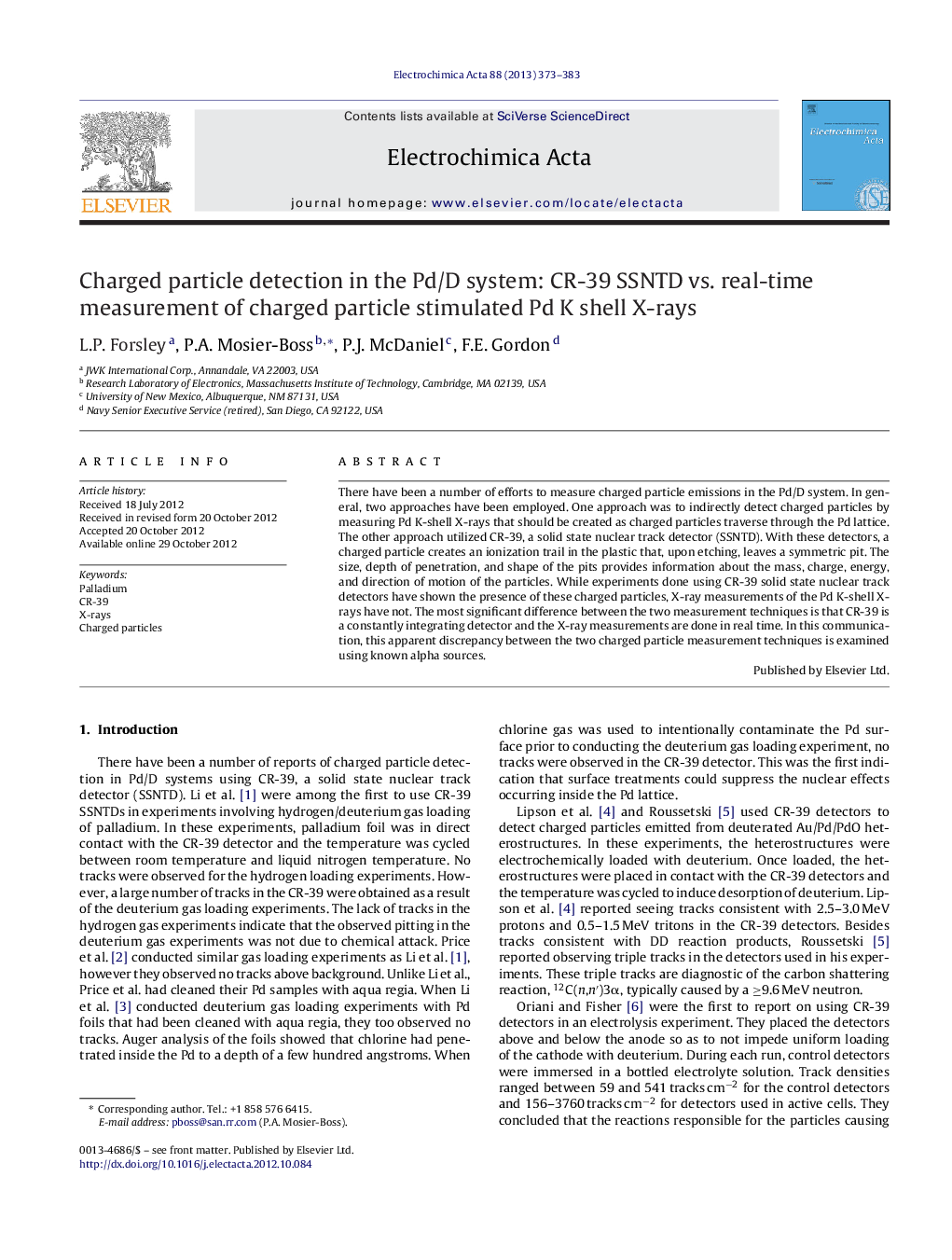| Article ID | Journal | Published Year | Pages | File Type |
|---|---|---|---|---|
| 187714 | Electrochimica Acta | 2013 | 11 Pages |
There have been a number of efforts to measure charged particle emissions in the Pd/D system. In general, two approaches have been employed. One approach was to indirectly detect charged particles by measuring Pd K-shell X-rays that should be created as charged particles traverse through the Pd lattice. The other approach utilized CR-39, a solid state nuclear track detector (SSNTD). With these detectors, a charged particle creates an ionization trail in the plastic that, upon etching, leaves a symmetric pit. The size, depth of penetration, and shape of the pits provides information about the mass, charge, energy, and direction of motion of the particles. While experiments done using CR-39 solid state nuclear track detectors have shown the presence of these charged particles, X-ray measurements of the Pd K-shell X-rays have not. The most significant difference between the two measurement techniques is that CR-39 is a constantly integrating detector and the X-ray measurements are done in real time. In this communication, this apparent discrepancy between the two charged particle measurement techniques is examined using known alpha sources.
